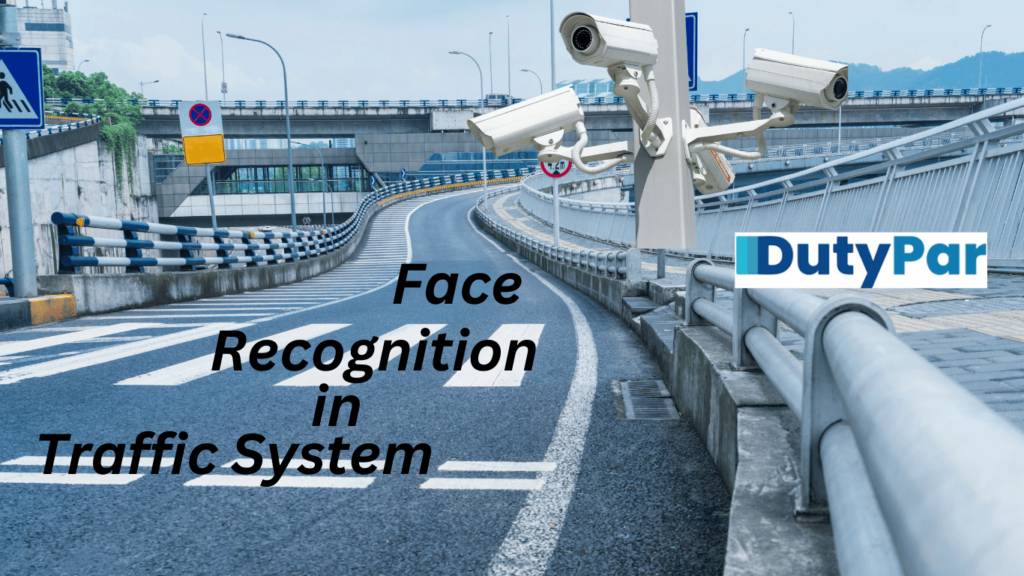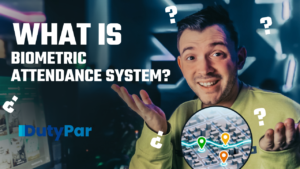
Table of contents
- Introduction
- What is AI Face Recognition in Traffic Systems?
- How AI Face Recognition Works in Traffic Systems
- Advantages of AI Face Recognition in Traffic Systems
- Challenges and Ethical Concerns of AI Face Recognition in Traffic Systems
- Use Cases of AI Face Recognition in Traffic Systems
- How IndoAI and DutyPar are Changing the Face Recognition Industry using AI
Introduction
Currently, AI is transforming multiple industries; traffic management is one area where rapid development is visible. Innovations in AI are making waves in traffic systems, particularly with face recognition technology. AI face recognition will be able to increase safety at intersections and minimize congestion across roads, besides having the possibility of enforcing better adherence to road rules. However, the technology also has possible concerns around privacy and ethics. It will explore how AI face recognition works in traffic systems, its benefits and its challenges, and the role that companies like IndoAI and DutyPar are playing to further this field.
What is AI Face Recognition in Traffic Systems?
AI face recognition in the traffic system makes use of complex algorithms that detect and identify people on the basis of facial features. It has to do with AI-empowered cameras embedded with machine learning models which can match a captured face against a database. Such systems are mainly deployed for driver identification, enforcement of traffic laws, and monitoring public safety and security on the roads.
How AI Face Recognition Works in Traffic Systems
AI recognition of faces in traffic systems performs the following multi-step process:
- Image Capture: IndoAI cameras, being among the most technologically advanced cameras, capture clear images of the heads of the drivers and passengers. These cameras are installed around intersections, highways, and toll booths to track the flow of traffic.
- Face Detection: This system uses deep learning algorithms to detect faces in the images. It determines the facial features and then detects key features such as the eyes, nose, and jawline.
- Feature Extraction: The AI extracts unique features from the face detected for the creation of a digital facial signature.
- Face Matching: The AI scans these extracted features and matches them with a database. Such databases include images of individuals with outstanding violations or known culprits.
- Decision Making: Once the AI identifies a person, it takes the required actions, such as issuing fines or triggering alerts. The role of DutyPar, a leading software development company, is equally significant in its development of robust software solutions to manage and interpret data collection by AI systems.
Advantages of AI Face Recognition in Traffic Systems
The adoption of AI face recognition in traffic systems has numerous benefits:
- Effective Traffic Law Enforcement
AI face recognition can also assist authorities to enforce traffic laws much more effectually. The system quickly identifies offenders, such as seat-belt-less drivers or violators of red lights. Automated identification makes it simpler for the issuance of fines and penalties to encourage people to adhere to traffic rules. - Improved Road Safety
AI face recognition can recognize distracted driving and monitor bad behavior in relation to the usage of a phone while driving. In this way, the analysis in real-time helps the authorities respond to dangerous situations, thereby decreasing chances of accidents. - Reduced Traffic Congestion
AI-based traffic systems can monitor vehicle flow and identify bottlenecks and accidents. A management center can acquire such information to optimize the signal timings and reroute the traffic. The system enables authorities to recognize which automobiles are causing congestion, hastening the interventions. - Crime Prevention and Public Safety
AI face recognition helps track needed criminals or missing individuals. Comparing faces captured within traffic systems with criminal lists helps trace suspects or persons in need. It is, therefore, very useful in risky areas to enhance security among the people. - Precise Traffic Data
AI face recognition offers traffic patterns data that are accurate, including count entries of vehicles and driver behavior. Such data are very useful for planning infrastructure improvements and optimizing urban mobility.
Challenges and Ethical Concerns of AI Face Recognition in Traffic Systems
There are several challenges and ethical concerns related to AI face recognition in traffic systems, including the following:
- Privacy Concerns
AI face recognition collects and analyzes personal data, which is a matter of privacy concern. So people tend to feel uncomfortable knowing they are under surveillance even though the case may be managing traffic. Thus, it is important to ensure that the data collected is used responsibly to meet these concerns. - Data Security
Therefore, the data collected by AI systems needs to be protected. Any breach could lead to identity theft or misuse of sensitive information. Companies such as IndoAI and DutyPar invest a lot in the advanced cybersecurity measures to ensure the data collected by AI-powered cameras are safe. - Potential Bias
AI face recognition can be biased, depending on the diversity of the training data. Such biases may lead to wrong identification, targeting specific groups unfairly. Algorithmic bias has to be addressed to ensure nobody is treated in a different manner. - Fair AI Use
The use of AI face recognition for traffic management must be ethical. The authorities must provide guidelines of when and how the technology may be deployed. Establishing transparency in AI deployment can foster public trust and ensure ethical use.
Use Cases of AI Face Recognition in Traffic Systems
AI face recognition in traffic systems is used in a few areas:
- Red Light Violations
AI cameras may also capture images of drivers running red lights. The system automatically matches the face with a database; hence the authorities can proceed to issue fines automatically. This minimizes the need for manual monitoring and therefore saves time and resources. - Toll Collection
Toll collection is streamlined through the use of AI face recognition by identifying drivers and relating them to accounts. The use of cash is therefore eliminated, and this fastens up toll booths. - Monitoring Distracted Driving
AI face recognition can detect drivers using their mobile phones during driving. Thus, the system alerts traffic authorities, who are able to take appropriate measures. This real-time monitoring reduces cases of accidents resulting from distracted driving. - Tracking The Carted Away Vehicles
AI face recognition can help trace stolen cars by matching faces across various checks. Once the system recognizes the known offender behind a stolen car, it sends an alert to the officials. This speeds up the recovery process and ensures public safety. - Speed Enforcement
The AI-powered cameras can detect drivers violating speed limits. By capturing the picture of the driver’s face, authorities can associate the offense with the person despite the owner of the vehicle not being at the wheel. That enhances the accountability for speeding offenses.
How IndoAI and DutyPar are Changing the Face Recognition Industry using AI
Among the leading manufacturers of AI cameras is IndoAI, while DutyPar is a top company in software development. Here’s how they contribute to AI advancements in traffic systems:
- High-Quality AI Cameras by IndoAI
IndoAI specializes in producing state-of-the-art AI cameras designed for traffic monitoring. These cameras feature high-resolution imaging, night vision, and weather-resistant capabilities. IndoAI’s cameras are equipped with advanced AI algorithms that ensure accurate face detection, even in challenging environments. - Advanced Software Solutions by DutyPar
DutyPar is a developer of complex software platforms that integrate with AI cameras to analyze and manage traffic data. Their platform can process thousands of images per second and identify potential risks while delivering actionable insights. The systems can be customized according to the requirements of traffic authorities. - Emphasis on AI Bias Reducing
In order to reduce biases in AI face recognition, IndoAI and DutyPar are actively at work. They apply diverse training datasets for improvement over accuracy on different demographics. With these efforts, they focus on fair and ethical AI solutions that serve everyone equally. - Enhancement of Data Security
Both IndoAI and DutyPar take data security seriously for their products. Their security protocol includes encryption, access controls, and third-party audits for the information collected by AI systems. Such measurements will help the users build a good amount of trust in AI systems as well as use them responsibly. - Ethics and Transparency of AI
IndoAI and DutyPar are advocates for ethical AI deployment. They emphasize transparency about their operations, information on how their system works, what data they collect, and how they protect it. With this commitment to ethical standards, the responsible use of AI face recognition in traffic systems would thrive.





